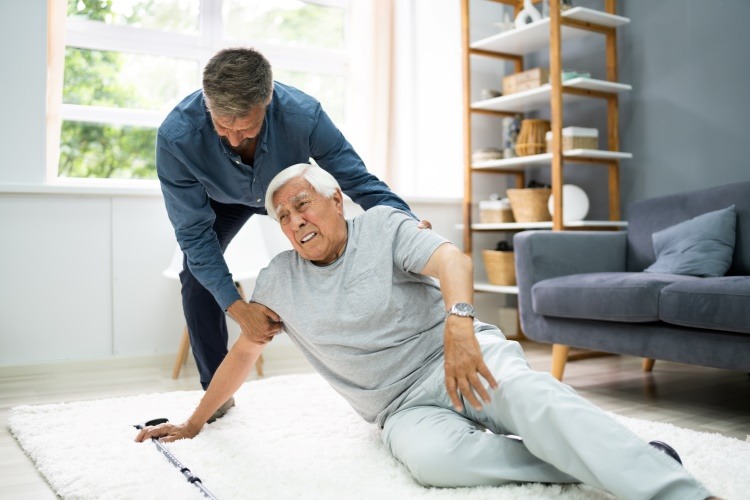Falls & Fractures in the Elderly at Home

Falls and fractures among the elderly are a growing concern, with falls being the leading cause of injury death for adults aged 65 and older. In 2021 alone, falls among this age group resulted in over 38,000 deaths and nearly 3 million emergency department visits according to the Centers for Disease Control and Prevention. A seemingly minor accident, such as tripping on a rug or slipping on a wet floor, can have devastating consequences for seniors. These falls often lead to broken bones, serious health problems, or long-term disabilities, making falls and fractures potentially life-changing events for elderly individuals. 1,2
Among older adults, falls frequently lead to various types of fractures and injuries. Hip and wrist fractures are particularly common, often requiring significant medical intervention and lengthy recovery periods. Chest injuries, including rib fractures, and dislocations of the hip and shoulder are also prevalent. Additionally, head injuries, abrasions, bruising, and sprains are frequent outcomes. Even when physical injuries are not severe, the psychological impact, such as a fear of falling, can lead to a loss of confidence and reduced participation in daily activities. 3
Despite these alarming statistics, falls can be prevented, especially in individuals with a history of previous falls, which is the best predictor of future incidents. Implementing safety measures and making lifestyle adjustments can significantly reduce the risk, helping older adults maintain their health and independence.
Common Causes of Falls in the Elderly
Falls among the elderly are often caused by a combination of intrinsic and extrinsic factors. Intrinsic factors include age-related changes such as poor balance and coordination, muscle weakness, and impaired eyesight, hearing, and reflexes. Conditions like diabetes, cardiovascular disease, neurological disease, arthritis, thyroid problems, and issues with nerves or blood vessels can also significantly affect balance. Additionally, cognitive impairments, including mild cognitive impairment and dementia, increase your risk of falling. The loss of muscle mass (sarcopenia), postural hypotension, and foot problems can further compound these risks. Medications, especially those causing dizziness or confusion, can contribute to falls, with the risk increasing as the number of medications taken rises. Polypharmacy, or the side effects of one or more medications, can be significant contributing factors.
Extrinsic factors, such as environmental hazards, play a significant role in senior falls. Slippery floors, poor lighting, and tripping hazards like rugs or uneven surfaces are common culprits. Unsafe footwear, such as backless shoes or high heels, can also increase the risk of falling. Finally, the loss of bladder control, requiring rushing to the bathroom, can lead to an increase in accidents. 2,3
Immediate Steps After a Fall
For Caregivers:
When an older adult falls, staying calm is crucial. Encourage deep breaths to help them relax. Assess the situation by asking about pain and checking for injuries. Advise them to stay still briefly and reassure them of your support. If they can move, help them roll onto their side, rest, then get onto their hands and knees. Guide them as they crawl to a sturdy chair and assist them in sitting down. If they appear injured or cannot get up, seek medical attention immediately. Keep them comfortable and warm while waiting for help. After the fall, accompany them to the doctor to check for injuries and possible underlying causes. Continuously reassure and comfort them to reduce anxiety. 2,3
For Older Adults:
If you fall while alone, stay calm. Take deep breaths to relax and recover from the shock. Remain still for a few moments to assess for injuries. Avoid getting up too quickly. If you can get up safely, roll onto your side, rest, then slowly get onto your hands and knees. Crawl to sturdy furniture, use it to help you rise and sit. If you’re injured or cannot get up, call for help immediately. Keep a charged phone nearby and consider having an emergency response system on you such as a smartwatch or life alert system. After the fall, visit your doctor to check for injuries and possible underlying causes. Depending on the severity of the fall, orthopedic rehab may be necessary to help regain independence. 2,3
Preventing Falls at Home
Ensuring a safe home environment and addressing tripping hazards can significantly reduce the risk of falls, helping older adults maintain their independence and quality of life. Here are some tips for reducing falls from room to room:
Bathrooms
- Mount grab bars near toilets and in the shower/tub.
- Use nonskid mats or strips on wet surfaces.
- Add a night light for visibility in the dark.
Bedrooms
- Ensure a phone and charger are within easy reach of the bed.
- Keep a flashlight and cane by the bed.
- Place night lights and light switches near the bed.
Kitchen
- Store frequently used items within easy reach.
- Prepare food while seated to avoid fatigue.
- Clean up spills immediately.
Floors, Stairways, and Hallways
- Install secure handrails on both sides of stairs.
- Ensure good lighting with switches at the top and bottom of stairs and in hallways.
- Keep walking areas clear of clutter and secure carpets with no-slip strips.
Outdoor Spaces
- Install secure handrails and ensure steps are even.
- Add non-slip material to outdoor stairways and avoid leaving during bad weather.
- Keep outdoor areas clear of debris. 4
Additional Tips for Senior Fall Prevention
Reduce Obstacles
- Keep electrical cords and clutter away from walking paths.
- Arrange tables and furniture to avoid bumping into them.
- Use a reach stick for high items and never stand on stools or chairs.
- Be mindful of pets and children running around.
- Use assistive devices like canes, walkers, or handrails.
Moving Around
- Wear properly fitting, sturdy, flat shoes with nonskid soles.
- Avoid high heels, floppy slippers, slick-soled shoes, and walking in stockings.
- Be mindful of uneven flooring or transition strips where different flooring types meet.
Keeping Active
- Engage in activities like walking, water workouts, or tai chi.
- Consult a healthcare provider about safe exercise programs.
- Consider physical therapy to improve balance and strength. 4,5
Developing a comprehensive fall prevention plan with healthcare providers is essential for safeguarding older adults from potential falls. Regular check-ups for vision, hearing, and medication side effects play a crucial role in identifying and addressing risk factors that could lead to falls. By actively engaging in these health assessments and implementing safety measures at home, caregivers and older adults can work together to create a safer living environment. Taking proactive steps to ensure a well-maintained and hazard-free home not only enhances safety but also supports overall well-being and independence.
References
[1] “About Older Adult Fall Prevention.” Centers for Disease Control and Prevention, Centers for Disease Control and Prevention, www.cdc.gov/falls/about/index.html. Accessed 25 July 2024.
[2] Falls and Fractures in Older Adults: Causes and Prevention | National Institute on Aging, www.nia.nih.gov/health/falls-and-falls-prevention/falls-and-fractures-older-adults-causes-and-prevention. Accessed 25 July 2024.
[3] “Older People – Preventing Falls at Home.” Better Health Channel, Department of Health & Human Services, 9 Apr. 2003, www.betterhealth.vic.gov.au/health/healthyliving/falls-prevention-at-home.
[4] Preventing Falls at Home: Room by Room | National Institute on Aging, www.nia.nih.gov/health/falls-and-falls-prevention/preventing-falls-home-room-room. Accessed 25 July 2024.
[5] “Fall Prevention: Simple Tips to Prevent Falls.” Mayo Clinic, Mayo Foundation for Medical Education and Research, 14 June 2024, www.mayoclinic.org/healthy-lifestyle/healthy-aging/in-depth/fall-prevention/art-20047358.
The information provided in the article is for general informational purposes only. This information is not a substitute for medical advice. Accordingly, before taking any actions based upon such information, you are encouraged to consult with the appropriate professionals.



